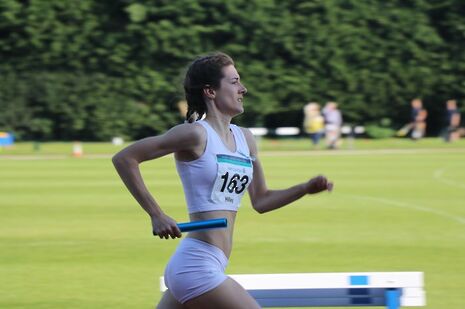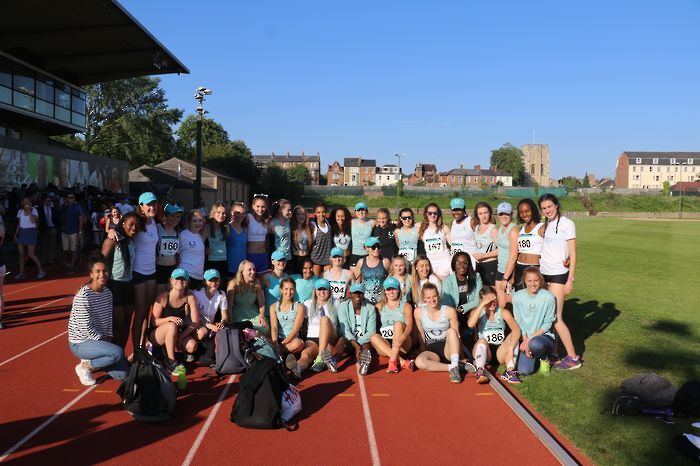Despite British successes, the World Athletic Championship offered a concerning glimpse into the fragile future of athletics
Posy Putnam exposes the decaying future of athletics after the World Athletics Championships in Doha

Two new British World Athletic Champions were forged under the sweltering heat in Qatar last week. Their individual triumphs are a feel-good story, their grins now splashed across national papers. But their moments of glory serve as a stark contrast to the state of athletics as a whole.
In Doha, Qatar, at the 2019 IAAF World Athletics Championships, Dina Asher-Smith took home gold in the 200 metres, silver in the 100-metres and a silver in the 4x100 metres relay, while Katerina Johnson-Thompson triumphed in the heptathlon. Both women deserved these moments of global success, having experienced their fair share of athletic hardship: for Asher-Smith, a fifth-place finish in Rio 2016, and Johnson-Thompson, missing major global medals in 2015, 2016 and 2017 despite a promising London 2012 and junior career.
However, what should have been a moment to celebrate their achievement fell devastatingly flat.
Watching Johnson-Thompson’s post-victory interview, the silence of the crowd was deafening. Empty seats lined the background. Her joy was genuine, and her smile was infectious, but this only served to accentuate the fact that the Khalifa stadium – designed to seat 40,000 spectators – was virtually barren.
The story was the same for Asher-Smith. According to The Guardian, fewer than 1,000 people witnessed her 200-metre victory. Her mother claimed she had seen more spectators at a national age-group athletic championship in Bedford. Although thousands of free tickets were given away, much of the crowd was long gone by the late hours of the night when most finals were scheduled. Attendance only averaged 20,000 people over the first eight days of the Championships, with more impressive turnouts over the first two.
If athletics wishes to remain a global sport, concessions and compromises must be found for it to truly reach a global audience.
Traditionally, World Championships have largely been held in Europe, so it is understandable that efforts have been made to challenge this in recent years. In doing so, local weather and time zones must be considered.
However, what is the point of such concessions – or indeed hosting an athletic championship – if there is no-one to watch? Whilst Qatar itself may bolster its global standing, it certainly does not reflect well on the IAAF, the governing federation of athletics associations, or the health of track-and-field as a whole.
This begs the question, why Doha? Both Barcelona and Eugene bid for the 2019 Championships, and yet Doha prevailed, despite its lack of infrastructure and hostile weather conditions. The answer, it seems, is money. Currently, Lamine Diack, President of the IAAF when Doha was awarded the Championships, is being investigated by French courts for corruption and bribe-taking in relation to international athletics, notably including suggestions of bribes around the choice of Doha. For a sport already mired in doping scandals, and a country already accused of human rights violations in relation to immigrant labour, this does not sit well with athletes or fans.
“A sport tainted by financial corruption, human suffering, low crowd turnout and doping scandals suddenly becomes far less marketable to a new generation.”
And yet last week, Lord Coe, President of the IAAF, claimed that “on athlete performance this is the best World Championships we have ever had.” But athletics is a spectator sport. “Athlete performance” may be currently thriving, but without crowd turnouts, how can this momentum continue? A sport tainted by financial corruption, human suffering, low crowd turnout and doping scandals suddenly becomes far less marketable to a new generation.
Despite the brilliance of Asher-Smith and Johnson-Thompson, the sport needs more than a few individual superstars to survive. Indeed, for British Athletics, this was their worst medal haul at a Championships since 2005. Sport needs grassroots participation, and grassroots participation is fueled by the adrenaline of witnessing these incredible athletic feats. This is not something that can simply be replicated through the screen, especially when sports must now compete for attention with virtual entertainment and social media.
Furthermore, the lack of crowds points to a more sinister conclusion – athletics is no longer about the athletes. The crowds in Doha provided little support or atmosphere for the competitors, and the weather conditions proved dangerous, with several long-distance runners collapsing. And, if the French prosecutors are to be believed, the awarding of the championships to Doha suggests that the very ‘point’ of athletics has now shifted – the athletes and fans are no longer front and centre, but rather a few wealthy individuals, nations and companies who are intent on maximising their own profit.
With question marks hanging over the 2021 Championships in Eugene and its ties to the global conglomerate Nike, as well as continued doping violations and, at home, a lack of international British medals, athletics faces a turning point. In future years, will the crowds – and the integrity of the sport – return? Or is this the start of a slow, painful descent into irrelevance?
 News / Cambridge academics stand out in King’s 2026 Honours List2 January 2026
News / Cambridge academics stand out in King’s 2026 Honours List2 January 2026 Interviews / You don’t need to peak at Cambridge, says Robin Harding31 December 2025
Interviews / You don’t need to peak at Cambridge, says Robin Harding31 December 2025 Comment / What happened to men at Cambridge?31 December 2025
Comment / What happened to men at Cambridge?31 December 2025 News / Varsity’s biggest stories of 202531 December 2025
News / Varsity’s biggest stories of 202531 December 2025 News / Unions protest handling of redundancies at Epidemiology Unit30 December 2025
News / Unions protest handling of redundancies at Epidemiology Unit30 December 2025










